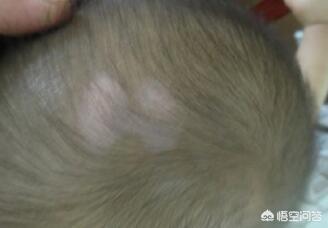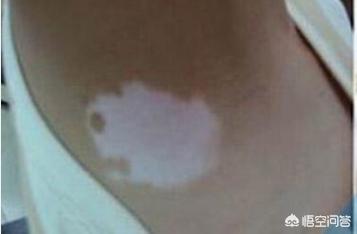How can I test myself if I suspect I have vitiligo?
How to tell if you have vitiligo, I'll teach you an easier way:lit. first look, second feel and third look。
One look is to see the color of the white spots, which in vitiligo patients appear as pale white, milky white, cloudy white or porcelain white;
The second touch is to touch the area of the white spots, and the surrounding normal skin to compare, vitiligo patients with white spots are not raised or depressed, the surface is smooth and no dandruff, the majority of patients do not hurt or itch;
The three photos is with the help of a little tool, do a preliminary screening, such as blue fluorescent pen, etc., with these gadgets to shine the parts of the white spots, vitiligo patients will show white or blue-white fluorescent white reaction.
If these three conditions are met, then it is possible that you have vitiligo.
It is worth noting that self-testing at home is not accurate and is prone to misdiagnosis and omission, so it is recommended to find a professional doctor and undergo a professional examination.
The physical signs of vitiligo are more obvious: at first, it is mostly a 1-3cm sized hypopigmented or depigmented spot with clear edges, and there may be a ring of pigmentation around the white spot, which may gradually expand with the change of the condition or appear as a rash on other parts of the skin. An experienced dermatologist can easily give a diagnosis.
A common test to consider is usually a WOODS light, which can be used to differentiate from some hypopigmented dermatoses or fungal infectious dermatoses.
If the rash is odd or complex, consider taking a pathologic biopsy of the skin over the lesion to rule out certain skin conditions such as DLE, anemic nevi, and sclerotia.
As for self-testing, it's still not as easy and reliable as going to the dermatologist and seeing a doctor.
As above.
 Human skin is very sensitive and can be affected by some factors to develop skin diseases. Vitiligo is a relatively common skin disease, but because the symptoms of vitiligo are somewhat similar to other skin diseases, resulting in patients not being able to diagnose themselves. Then how to determine that you have vitiligo?
Human skin is very sensitive and can be affected by some factors to develop skin diseases. Vitiligo is a relatively common skin disease, but because the symptoms of vitiligo are somewhat similar to other skin diseases, resulting in patients not being able to diagnose themselves. Then how to determine that you have vitiligo?
 Self-determination method 1: Morphological identification
Self-determination method 1: Morphological identification
Vitiligo white spot color and normal skin color grading is relatively clear and easy to judge, the white spot surface is smooth and free of dandruff, varying in size and shape, if the border is blurred or spreading towards the normal skin, then it may be vitiligo.
Self-determination method two: color identification
Vitiligo self-diagnosis can be distinguished by observing its color mostly white patches, but because of the different degrees of pigment loss, it can also be manifested as light white, milky white, cloudy white and porcelain white.
Self-determination method 3: physical identification
Rub or pat the white skin and normal skin. If the normal skin turns red and the white patches remain unchanged, the white patches are not vitiligo; if both the normal skin and the white patches turn red, the white patches are vitiligo.

If you want to diagnose whether you are suffering from vitiligo, you still need to go to the hospital to receive a detailed examination, once found to be suffering from vitiligo should actively receive treatment, the earlier the discovery, the shorter the treatment time, so as not to waste money and delay the condition.
Thank you for the invitation, first of all, tell you a little, heart, do not see the white spots feel is vitiligo, vitiligo after the formation of the chances are very low, if the family has genetic another say, if not, do not blindly think, the heart burden is very heavy is very bad. Because we all know that vitiligo is no way to treat.
To go to the regular hospital to check never go to small clinics, private hospitals, where all for money. The check is not allowed to say, but also charges are very expensive I know here in a private hospital told a 90% probability is that the hormone treatment alone cost hundreds of thousands of dollars, and finally delayed the condition, and finally went to the three hospitals to check what is ringworm, just long and vitiligo symptoms are extremely similar just.
About self-checking, save your breath. The best way not to self-check this thing is to go to a 3A hospital and then to a few more public hospitals, preferably in a big city, because a lot of small places are not equipped to check.
If the results are consistent go extremely hard for treatment. If there are inconsistencies go to a more authoritative place to check. Until confirmed.
This question and answer are from the site users, does not represent the position of the site, such as infringement, please contact the administrator to delete.